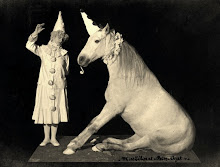
This is all well and good and relatively obvious, but imagine depth perception was reversed. Such is the occurrence when using a device called the pseudoscope, which makes objects appear inside out. Apparently inside out is the opposite of depth, which sort of twists me up when I try to think about the semantics of that philosophically. The word pseudoscope is Greek and means "false view"; this term was coined by English scientist and inventor Sir Charles Wheatstone, who also invented the more useful brother of the pseudoscope, the stereoscope (as well as a bunch of other incredible devices, including the kaleidophone, which makes sound vibrations visible). But while the stereoscope is certainly useful, the pseudoscope is odd and surreal, and I have an admittedly useless tendency to prefer things that are the latter.

The pseudoscope works by reversing the images from a normal stereoscope, which makes all the parts that are convex concave and vice versa. Basically what it does is, by using optical prisms or mirrors, trade the view of the right eye for that of the left eye and vice versa.
Here is a neat-o video on making your own pseudoscope:

No comments:
Post a Comment